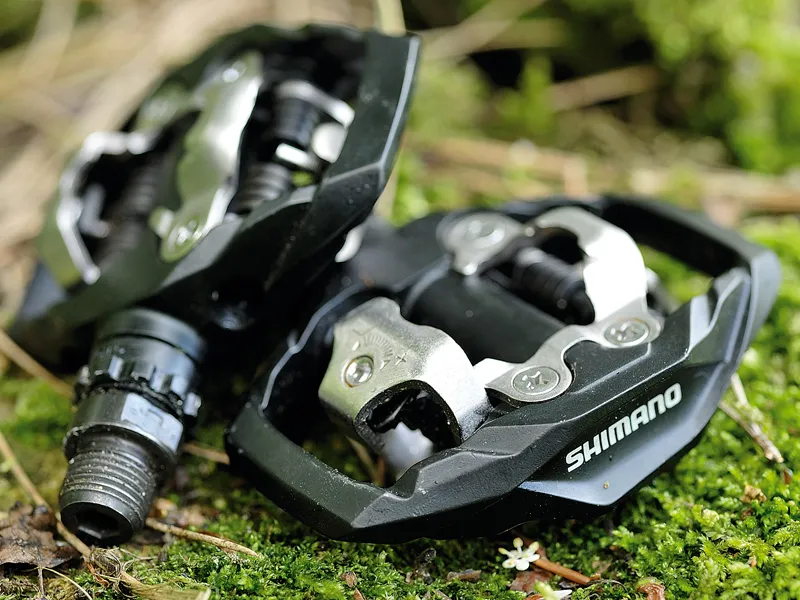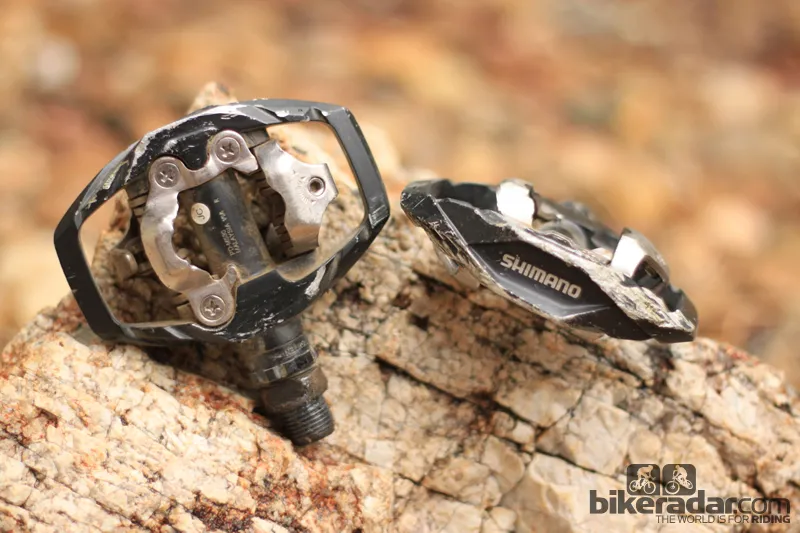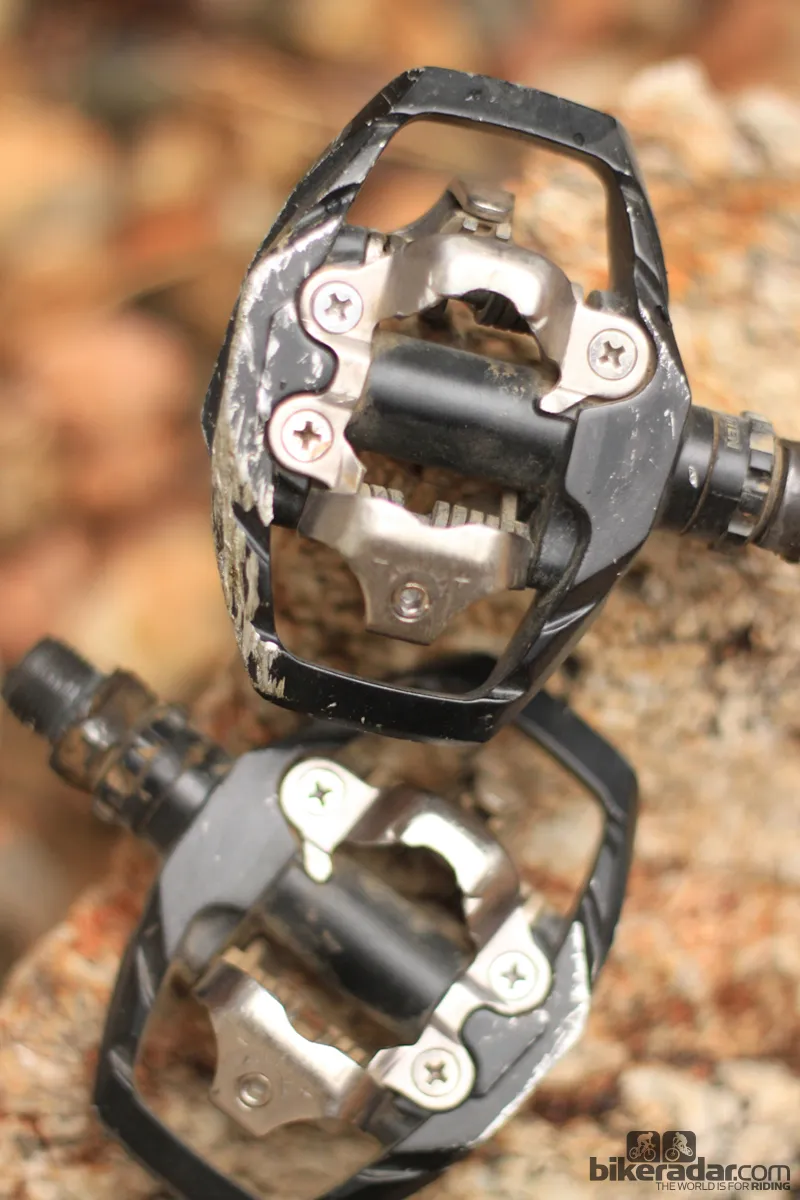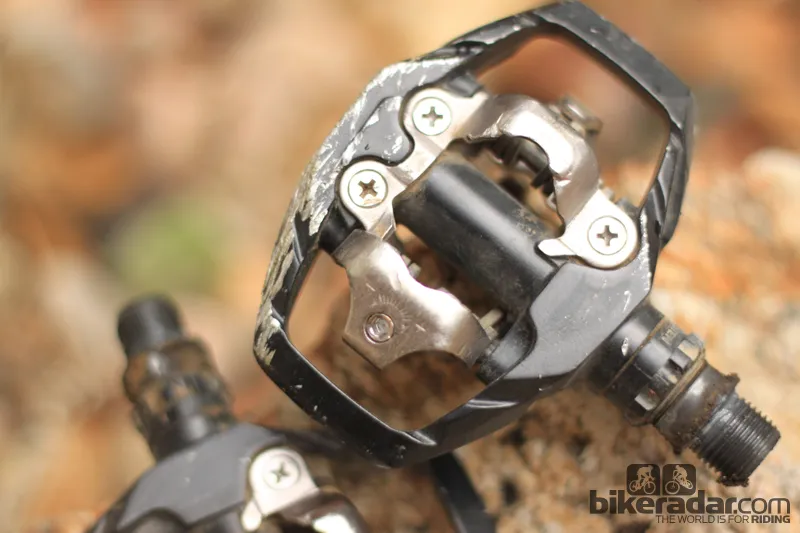When, just over 20 years ago, Shimano decided to make clipless mountain bike pedals it came up with a product that’s changed little over the years. The 2011 PD-M520 is the default choice for anyone getting into clipless; it’s cheap, lightweight, easy to adjust and as reliable as night following day.
Until this PD-M530 arrived, if you wanted a larger platform with your Shimano clipless pedals you had to go for its honest, but clumpy M545s with their big, faux bear trap alloy cage (M424s are the same pedal with a resin cage). They work, but are heavy and, for all the size of the cages, offered little extra support.
What the M545 and M424s did give though was a resistance to pedal roll on entry – where you go to toe the front of the cleat into the mechanism only for the small body of the pedal to roll on the outsole of your shoe instead of clipping in. The downside was they weren’t light, they were big and good at catching the ground.
Shimano boiled this info down and made the PD-M530 for those who ride technical trails where being absolute light weight is less of an issue – the extra alloy in the M530’s Trail ‘wings’ adds 39g per pedal (an M520 weighs 188g). Weight aside the new M530 is a real rider’s pedal. Entry to the cleat mechanism is toe first, the same as all Shimano SPDs, just a lot more reliable thanks to the elimination of the roll.
Though the new pedals weren’t designed to specifically offer more platform to stand on, if you’ve got very flexible soled riding shoes you might feel a bit less shoe curl using the M530s. Going back to a conventional sized SPD pedal you immediately sense the pedal is harder to locate on entry and more prone to roll. If you’re considering an upgrade or first time buying SPD pedals try the ‘Trail’ M530 in preference to the old M520.
This article was originally published in What Mountain Bike magazine.



